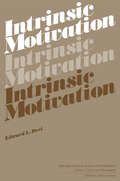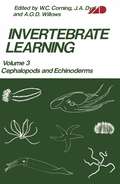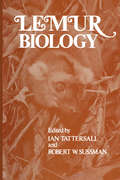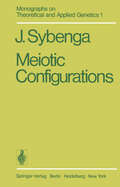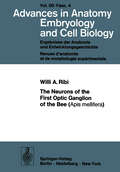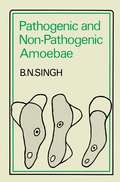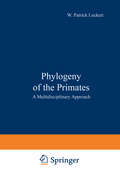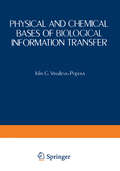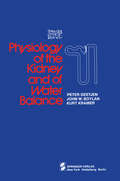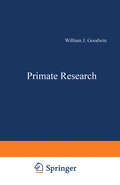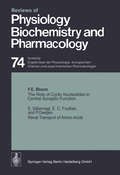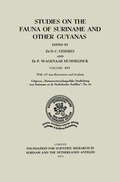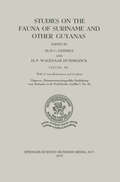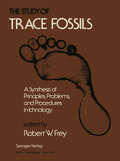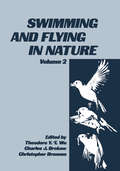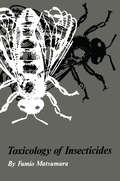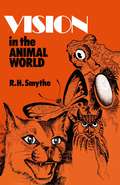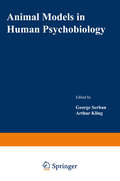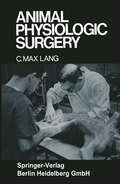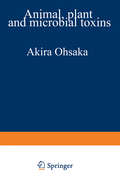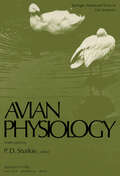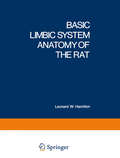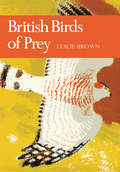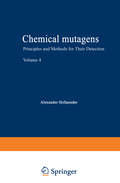- Table View
- List View
Intrinsic Motivation (Perspectives in Social Psychology)
by Edward L. DeciAs I begin to write this Preface, I feel a rush of excitement. I have now finished the book; my gestalt is coming into completion. Throughout the months that I have been writing this, I have, indeed, been intrinsically motivated. Now that it is finished I feel quite competent and self-determining (see Chapter 2). Whether or not those who read the book will perceive me that way is also a concern of mine (an extrinsic one), but it is a wholly separate issue from the intrinsic rewards I have been experiencing. This book presents a theoretical perspective. It reviews an enormous amount of research which establishes unequivocally that intrinsic motivation exists. Also considered herein are various approaches to the conceptualizing of intrinsic motivation. The book concentrates on the approach which has developed out of the work of Robert White (1959), namely, that intrinsically motivated behaviors are ones which a person engages in so that he may feel competent and self-determining in relation to his environment. The book then considers the development of intrinsic motiva tion, how behaviors are motivated intrinsically, how they relate to and how intrinsic motivation is extrinsically motivated behaviors, affected by extrinsic rewards and controls. It also considers how changes in intrinsic motivation relate to changes in attitudes, how people attribute motivation to each other, how the attribution process is motivated, and how the process of perceiving motivation (and other internal states) in oneself relates to perceiving them in others.
Invertebrate Learning: Volume 3 Cephalopods and Echinoderms
by W. C. Corning J. A. Dyal A. O. WillowsLemur Biology
by Ian TattersallThe volume of studies on prosimian primates has, until recently, tended to lag well behind that of studies on the higher primates. This is so despite the fact that the considerable intrinsic interest of the living prosimians and the signifi cance of their stuQ,y for our understanding of the earlier stages of primate evolution have long been acknowledged by zoologists, paleontologists, and anthropologists alike. Among the prosimians, the Malagasy lemurs are of profound interest not only because they include the only extant diurnal forms, but also because it is only on Madagascar that the absence of competition with higher primates has allowed a surviving prosimian fauna to radiate, es sentially unrestricted, into a broad spectrum of ecological zones. In contrast, the few extant prosimians of Africa and Asia occupy a relatively narrow range of "refuge" niches; although of considerable interest in themselves, they do not show the richness and variety of adaptation which make the Malagasy prosimian fauna such a fascinating object of study. Over the past few years, however, there has been a considerable resur gence of interest in the prosimians in general, and in the lemurs in particular. The range of studies resulting from this rekindling of interest is wide, compre hending the systematics, evolution, anatomy, behavior, and ecology of these forms. This volume constitutes a progress report on our knowledge of the le murs.
Meiotic Configurations: A Source of Information for Estimating Genetic Parameters (Monographs on Theoretical and Applied Genetics #1)
by J. SybengaThe aim of the monographs is to foster effective intra- and interdisciplinary communication between geneticists, and plant and animal breeders. This is to be achieved by publishing authoritative up-to-date texts; concise, but at the same time comprehensive, monographs, and multiauthor volumes on theoretical and applied genetics. The following broad fields of genetics and breeding are within the scope of the series: Evolutionary genetics Developmental genetics Population genetics Biochemical genetics Ecological genetics Somatic cell genetics Biometrical genetics Agricultural genetics Cytogenetics Mutation breeding Radiation genetics Breeding methodology Acceptable subjects for the Monographs on Theoretical and Applied Genetics are basic and applied aspects of genetic variation; genetic resources; genetic exchange and reproduction; mutagenesis; genotype-environment interaction; gene structure, regulation, action, expression and interaction; chromosomal and extrachromosomal inheritance of economic traits, and genetic models and simulations. September 1975 The Editors Preface Meiotic configurations are looked at from a special point of view in this book: the extraction from them of the maximal amount of quantitative information of genetic interest. Although this requires a certain understanding of their origin and consequences, much of what is known about chromosomes and their for mation into the special structures collected under the rather indiscriminate term I "configuration", is not considered relevant for this purpose, and simply neglected.
Molecular Mechanisms for Repair of DNA: Part A (Basic Life Sciences #5)
by Philip HanawaltAn "age" has passed in the 40 years since we first observed recovery from radiation damage in irradiated bacteria. During the early 1930s, we had been discussing the possibility of rapid changes after radiation exposure with Farring ton Daniels, Benjamin Duggar, John Curtis, and others at the University of Wisconsin. After working with living cells, we had concluded that organisms receiving massive insults must have a wide variety of repair mechanisms available for restoration of at least some of the essential properties of the cell. The problem was how to fmd and identify these recovery phenomena. At that time I was working on a problem considered to be of great importance-the existence of the so-called mitogenetic rays. Several hundred articles and a score of books had already appeared dealing with mitogenetic rays, a type of radiation that was thought to exist in the shorter ultraviolet region. Our search for mitogenetic rays necessitated the design of experiments of greatest sensitivity for the detection of ultraviolet. It was vital that conditions be kept as constant as possible during exposure. All the work was done at icewater temperature (3-5°C) during and after exposure. We knew that light was an important factor for cell recovery, so all our experiments were done in dim light, with the plated-out cells being covered with dark cloth. Our statements on the effect of visible light stimulated Kelner to search for "photoreactivation' (as it was later called).
The Neurons of the First Optic Ganglion of the Bee (Advances in Anatomy, Embryology and Cell Biology #50/4)
by W.A. RibiPhylogeny of the Primates: A Multidisciplinary Approach
by W. LuckettThe past decade has witnessed a tremendous surge of interest in varied aspects of primate biology, encompassing virtually all disciplines of the biological sciences. Regardless of whether these studies have been approached from a paleontological, morphological, developmental, biochemical, neuroanatomical, or behavioral point of view, one under lying theme has been a common interest in the possible phylogenetic relationships suggested by the results of such studies. In some cases, sound taxonomic principles have not been followed in the interpretation of these data, and this has led to skepticism among many taxonomists with regard to the validity of some of the genealogical relationships and conclusions suggested by comparative studies of living primates. It is generally agreed that the fossil record alone provides the essential time dimension for directly observing changes in characteristics, but unfortunately this record is limited both in the number of genera represented and particularly in the incomplete nature of the available preserved material. On the other hand, extensive comparative analyses of numerous characteristics in living primates have provided additional insight into possible phylogenetic relationships, despite the lack of a time dimension. Such studies of both fossil and living primates are enhanced considerably by a cladistic analysis of the probable primitive (ancestral) or advanced (derived) condition of each character state discussed, based upon their distribution (and ontogeny, wherever possible) in a wide variety of primate and nonprimate taxa, including other eutherian mammals, marsupials, mono tremes, and reptiles.
Physiology of the Kidney and of Water Balance (Springer Study Edition)
by P. Deetjen J.W. Boylan K. KramerThis little book was assembled from the authors' lectures to medical students and was originally published as one volume in the series Human Physiology, edited by O. H. Gauer, K. Kramer, and R. Jung. The editors intended that each volume in this series be independent of the others and we have kept to this purpose. We have included here only material that we feel is necessary for medical students to know in order to understand kidney function in health and, by later extrapolation, in disease. The contents rest on accepted principles estab lished by experiments, and little space is given to what is controversial, hypo thetical, or unresolved. We are pleased that Dr. Coxon has been motivated to prepare an English language version of this text. We hope that it will serve as a ready reference and review source for the beleaguered medical student. P. Deetjen J. W. Boylan K.
The Role of Cyclic Nucleotides in Central Synaptic Function / Renal Transport of Amino Acids (Reviews of Physiology, Biochemistry and Pharmacology #74 )
by Floyd E. BloomStudies on the Fauna of Suriname and other Guyanas: Volume XVI
by D.C. Geijakes P. Wagenaar HummelinckStudies on the Fauna of Suriname and other Guyanas: Volume XV
by D.C. Geijakes P. Wagenaar HummelinckThe Study of Trace Fossils: A Synthesis of Principles, Problems, and Procedures in Ichnology
by Robert W. FreyIn 1971 I published a review of ichnology other concentrating only on traces made (Houston AAPG: SEPM Trace Fossil Field by a certain group of organisms, regardless Trip Guidebook) that I thought could be of their setting. Nevertheless, needless re dundancy has hopefully been eliminated. expanded rather easily into a worthwhile Some of the chapters are more special book on the subject. I probed that possi ized than others (because of the nature of bility for a while, thinking that I would particular topics); hence, these may be write the book myself. As I began to out somewhat less familiar or "comprehensible" line the chapters in more detail, however, than others-depending upon the reader's it soon became apparent that my personal own interests and background. Other dif knowledge of too many facets of ichnology ferences in the scope and content of vari scraped bottom all too soon. I quickly de ous chapters stem from the simple fact cided that a better book could be produced that a considerably greater backlog of pre by soliciting specific contributions from vious work is available in certain facets of other workers who, collectively, had first ichnology than in others. But we hope hand experience with virtually every aspect that all of the chapters will prove to be use of the field. That became the actual plan, ful to anyone wishing to delve 'into them. the result of which is this book.
Swimming and Flying in Nature: Volume 2
by Theodore WuThe Symposium on Swimming and Flying in Nature which was held at the California Institute of Technology, Pasadena, California from July 8-12, 1974 was conceived with the objective of providing an interdisciplinary forum for the discussion of funda mental biological and fluid mechanical aspects of these forms of natura110comotion. It was the earnest hope of all concerned in the organization of the Symposium that the exchange of knowledge and interaction of ideas from the disciplines involved would stimu late new research in this developing field. If the liveliness of the discussion generated among the 250 or so participants is any measure, then this objective was fulfilled to a significant degree. These two companion volumes contain the manuscripts of the papers presented during the Symposium. It is hoped that this permanent record will serve to perpetuate the enthusiasm and active thought generated during those days in Pasadena. The first volume contains the proceedings of the first two days of the confer ence (Sessions I to IV) which concentrated on the locomotion of micro-organisms. The second volume (Sessions V to VIII) deals with the propulsion of larger fish, insects and birds. Professor Sir James Lighthill's Special Invited Lecture which opened the Symposium is contained in the second volume, rather than the first, since it deals with natural flight.
Toxicology of Insecticides
by Fumio MatsumuraWhy are books written? Since I have read many works by my colleagues with admiration, this question has always intrigued me. Further, writing a book takes a good deal of time and effort, and I had imagined that I would never undertake such a demanding task. A few unexpected events and circumstances have changed my mind. The first was the pleasant experience of editing Environmental Toxicology of Pesticides with Drs. Mallory Boush and Tomomasa Misato. This fine symposium volume occasioned many interesting responses, including a suggestion to prepare a more complete treatise on the grounds that such "proceedings" volumes, by their very nature, do not satisfactorily offer a complete and coherent description of the field, but cater chiefly to specialists. I myself prefer single-authored books for basic understanding of a scientific field. The second circumstance leading to the present volume was the avail ability of teaching notes from my course on the toxicology of insecticides. As the need to cultivate environmental awareness has increased, there has been a parallel increase in the enrolments of such courses both here and in other major institutions. Yet no comprehensive and up-to-date text has been available. The third factor which facilitated the effort was an especially pleasant sabbatical in Hawaii, where the availability of the excellent Hamilton Library at the University of Hawaii considerably eased my task.
Animal Models in Human Psychobiology
by George SerbanIn March, 1974, an International Symposium was held at the Harmonie Club in New York to discuss a highly pertinent problem in today's research: the "Rele vance of the Animal Psychopathological Model to the Human." This meeting was sponsored by the Kittay Foundation, which brought together an outstanding group of scientists involved in widely different fields of research. This volume, it is hoped, will convey the tone of lively and cordial exchange between inter nationally renowned investigators, including Dr. I. Eibl-Eibesfeldt from Germany, Dr. Robert A. Hinde from England, Dr. Edward F. Domino from Michigan, and Dr. Pierre Pichot from France, Chairman of the Steering Committee. In his welcoming address, Mr. Sol Kittay reminded us that man has achieved remarkable control over his environment but not over himself, and he suggested that we should reexamine our ancestral origins, and search in animal behavior for clues to the understanding of normal and abnormal behavior in man.
Animal Physiologic Surgery
by Carol Max LangAnimal Physiologic Surgery presents an integrated approach to the study of surgery for first-year medical students and graduate students in physiology. The primary emphasis is on the interrela tionships between surgical techniques and physiologic phenomena observed before, during, and after surgery. All procedures described in the book are designed so that the student with a limited knowledge of surgery can successfully assume responsibility for pre- and postoperative care, as well as for the operation. Therefore, the attitude reflected in this work shows the student his obligation, and his privilege, to find the best method of treatment for the patient and to work at his highest capacity. The text begins with an introduction to operating-room proce dures, sutures and instruments, wound healing, anesthesia, and water and electrolyte balance. The second part deals with step-by step surgical instructions and clinical consideration in techniques, such as laparotomy, splenectomy, nephrectomy, and laminectomy. This part is followed by a section on laboratory techniques neces sary for following and evaluating the course of the patient and on postmortem techniques. The text strikes a balance between exacting detail and discussion of basic principles; it is easily adaptable to any curriculum. I am grateful to the contributors for their close cooperation, especially Dr. William J. White for sharing much of the responsi bilities. I am also very appreciative to Catherine Jackson and Anne Kupstas for their valuable editorial assistance, and to Joyce Greene vii Preface and Becky Robertson for their assistance in preparing the manu script.
Animal, Plant, and Microbial Toxins: Volume 2 Chemistry, Pharmacology, and Immunology
by Akira Ohsaka Kyozo Hayashi Yoshio Sawai Ryosuke Murata Masaru Funatsu Nobuo TamiyaDuring the past two decades, research on animal, plant, and microbial toxins has expanded rapidly, and new and exciting information has appeared to clarify both the clinical and therapeutic aspects of intoxication and, even more impor tant, to help us understand more exactly the structure and the mode of action of toxins on a molecular basis. Because of the interdisciplinary nature of toxin research, it is of vital impor tance that workers specializing in its different aspects should make a particular effort to exchange and keep up with new developments in this rapidly-expanding field. This has been one of the main purposes of the series of international meetings that have been held over the past ten years. The increasing interest in the results of toxin research can be explained partly by the growing general preoccupation with pollution and its toxic effects, which means that more anq more specialists in other fields are finding it necessary to keep in touch with current research into naturally occurring toxins. The papers in these volumes were presented at the Fourth International Symposium on Animal, Plant and Microbial Toxins, organized by the Inter national Society on Toxicology, held in Tokyo in September, 1974. The editors have decided to include both original reports and review articles, arranged according to disciplines. Editing has been kept to the minimum necessary for adequate comprehension of the materials.
Avian Physiology (Springer Advanced Texts in Life Sciences)
by P. D. Sturkiegested as acting as transmitters at synapses within point show structural modifications and physiologic 3 the eNS. The evidence for their transmitter roles specialization. Generally this specialization takes the form of the release of some chemical substance, in the bird is reviewed on p. 21. the transmitter, from one neuron (termed the pre synaptic neuron) into the narrow cleft, the synaptic Propagation of Excitation in Neurons gap, between apposed neurons. The postsynaptic membrane exhibits chemosensitivity and responds The axons of motor nerves and the dendrites of to the released transmitter in a characteristic way. sensory nerves are very long and may conduct exci The ability of one neuron to release transmitter tation over a meter or more. Neurons, and also and that of the other neuron to respond to it deter muscle cells, concentrate potassium within them mines the direction of the excitation's passage selves and exclude sodium. The tendency for potas across the synapse and the designation of one sium to leave the cell down its concentration gra membrane as "presynaptic" and the other as "post dient is matched by the concentrating ability of the synaptic. " In the periphery, where neuron apposes sodium pump which also pumps potassium. Be skeletal muscle, specialized regions of the mem cause the cell membrane is permeable to potassium, brane, such as the "endplate," have sometimes de a diffusion potential arises from the unequal con veloped. In smooth muscle, cardiac muscle, and centrations of potassium at either side.
Basic Limbic System Anatomy of the Rat
by Leonard HamiltonIf this were a traditional textbook of neuroanatomy, many pages would be devoted to a description of the ascending and descending pathways of the spinal cord and several chapters to the organization of the sensory and motor systems, and, perhaps, a detailed discussion of the neurological deficits that follow various types of damage to the nervous system would also be included. But in the first draft of this book, the spinal cord was mentioned only once (in a figure caption of Chapter 2) in order to illustrate the meaning of longitudinal and cross sections. Later, it was decided that even this cursory treatment of the spinal cord went beyond the scope of this text, and a carrot was substituted as the model. The organization of the sensory and motor systems and of the peripheral nervous system have received similar coverage. Thus, this is not a traditional text, and as a potential reader, you may be led to ask, "What's in this book for me?" This book is directed primarily toward those students of behavior who are either bored or frightened by the medically oriented texts that are replete with clinical signs, confusing terminology, and prolix descriptions of the human brain, an organ which is never actually seen in their laboratories. I should hasten to add, however, that this text may also serve some purpose for those who read and perhaps even enjoy the traditional texts.
British Birds of Prey (Collins New Naturalist Library #60)
by Leslie. H. BrownLeslie Brown's account of our 15 resident, 7 vagrant and 2 migrant species of eagles, falcons, hawks and vultures in Britain presents a great mass of scientific information about our birds of prey in a manner as attractive to the general reader as to the dedicated ornithologist.
